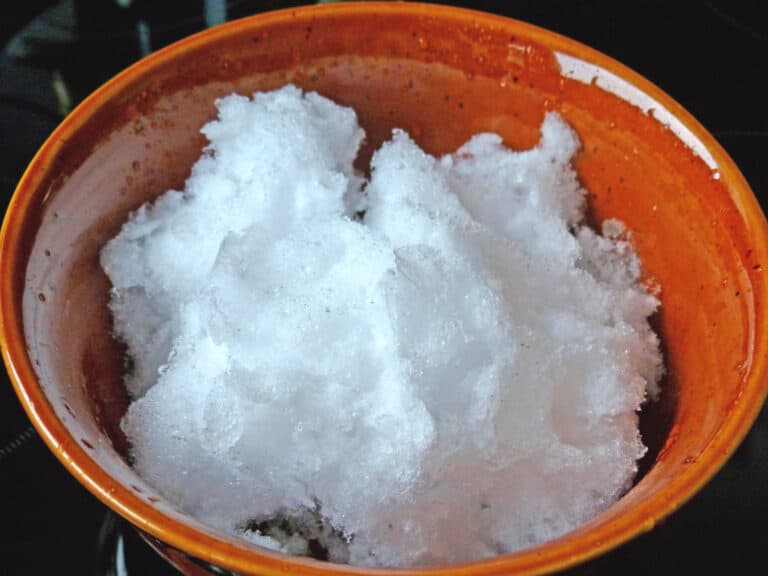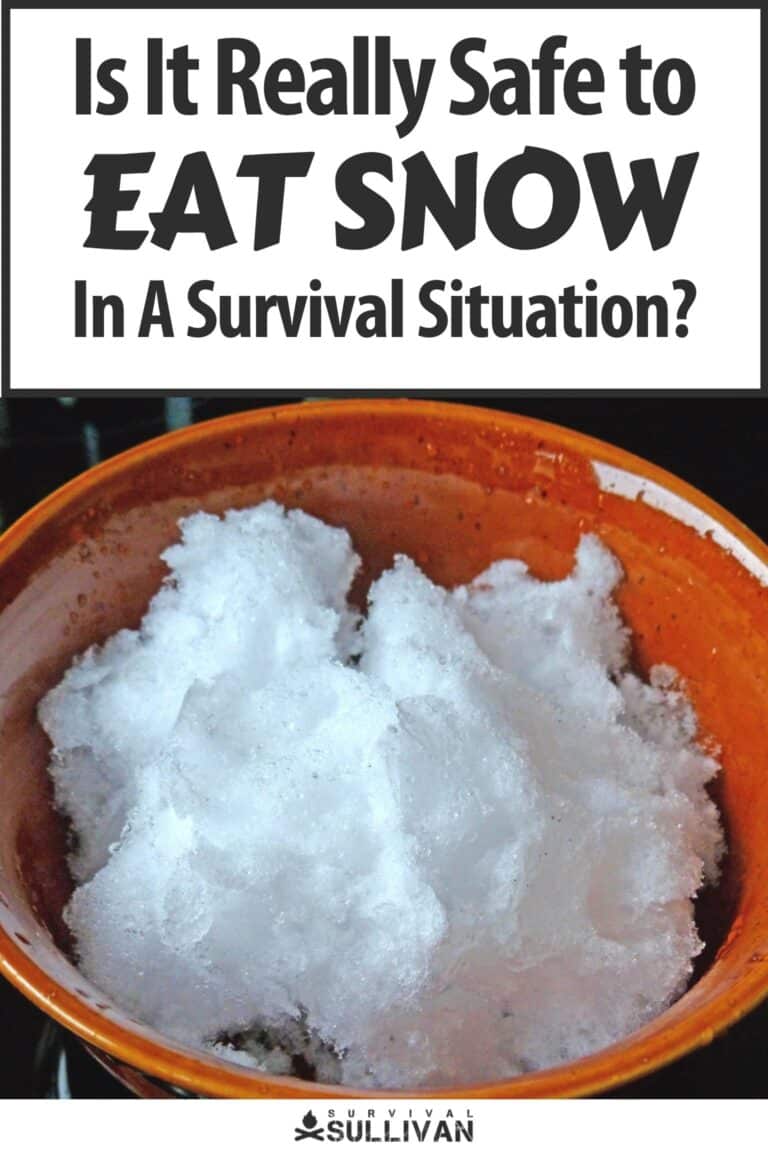Water is critical in a survival situation, even in the winter. Humidity is generally lower in the wintertime, and that means our bodies expel moisture at a greater rate than in other seasons.

This means in a survival situation you need to find a source of water, and fast as dehydration symptoms can start quickly.
During the wintertime, water can be easier to come by as snow accumulation covers the land.
Most people talk about melting snow but that takes time and resources to accomplish. In a survival situation, you don’t always have time.
Wouldn’t it be beneficial to just eat the snow as a source of water? Just how safe is it? And is it a good idea?
No, never eat fresh snow in survival situations unless you melt it first. Snow can cause your body temperature to fall, causing hypothermia, and your body will work harder to melt it, thus burning unnecessary calories.
Instead, you want to look for ways to melt the snow to both warm it up and eliminate any unsafe pollutants or viruses.
Why Is Eating Snow Bad For Your Body?
It is important to manage your energy levels when in a survival situation. This includes everything from calories to staying warm.
In a sense, every action counts if you don’t have a way to replenish the resources you’ve used.
Not only does this apply to our outward actions, but also to processes that our bodies go through. Your energy input must always be greater than your output if you want to survive.
Eating fresh snow off the ground can affect your body in ways that you don’t want in a survival situation.
Due to the snow being cold, we need to warm it up so it turns into a liquid and that requires calories.
You can see that by eating too much snow we are both cooling down our bodies and wasting energy that we could have used to stay warm.
Snow can hide all kinds of nasty bacteria and viruses. If your source of snow has been contaminated in any way you could get sick which could lead to further dehydration or other maladies.
Furthermore, if the weather starts to warm up you could get a mouthful of snow fleas if you aren’t paying attention.
It’s best to fully melt your snow and get it to a rapid boil to make sure it is safe for ingestion.
Melting The Snow Is The Safest Way To Consume It
It is in your best interest to boil any water that you find out in the bush, regardless of whether it’s from snow or not.
Not only does this kill any potential pathogens, but drinking it will bring up your body temperature.
Add some white pine needles to make a soothing tea that also helps fight off sickness.
You can also melt ice to make potable water but again, ensure you are checking the source of the ice as it may not necessarily be clean.
If you’re getting ice from a lake then you must boil the water as bacteria can live in extremely cold environments.
Melting ice can give you a better yield of water as snow is mostly air. It takes several pots full of snow to give you a small water bottle of potable water.
Ways To Melt Your Snow In A Survival Situation
Boil the snow
This is the most common practice and involves using a campfire to melt the snow in a cooking pot.
If you don’t have a pot available, look for any container that can hold snow and keep it close to the fire.
In a pinch, you can utilize the bark of a white birch tree and fashion a container using long strips or sheets from the tree.
Aboriginal tribes used birch bark to make canoes due to their waterproof and lightweight properties. Perfect for holding water in a survival situation.
This method is the ideal way to ensure that your melted snow is potable and won’t make you sick.
Additionally, you can filter out any debris using a handkerchief or shirt. Store the water in a bottle or covered container and keep close to your body so it doesn’t freeze.
Solar heat
Using the sun to passively melt your snow is great for melting large quantities.
Simply put your snow into a container that the sun heats and as the day progresses water will accumulate in the container.
A black container is ideal as solar energy is absorbed by the black material and held, instead of dispersed.
As long as you can get the temperature of the snow to be above 32 degrees Fahrenheit it will melt.
Make sure to cover the container slightly so that debris can’t fall in.
Keep in mind that this does not eliminate any bacteria or harmful pathogens that could be present and it’s still highly recommended you boil the water for at least 5 minutes afterward.
Body heat
This is another passive way to melt snow and is best used if you are hiking through the forest. You’ll need a water bottle that isn’t quite empty and fresh snow around you.
The idea is to scoop a little snow into the water bottle and the remaining room temperature water will speed up the melting process.
Keep your water bottle close to your body and the heat will continually melt while you are walking.
Simply add more snow to the bottle, and repeat the process. Of course, this method also has the potential to make you sick so be careful of where you are getting your snow.
Keep Yourself Hydrated Using Common Sense
Melting snow shouldn’t be your first option for water in a survival situation. You can prepare for most situations by having extra water or at least a stash of water purification items.
If you are traveling by car then having these backup items should be a no-brainer.
If you have to use snow to supplement your water source then boiling will be the best way to provide that without risk to your health.


Perrin is an adventure guide and naturalist currently living a nomadic life in the Canadian wilderness. His education and expertise is in wilderness survival and wildlife tracking. He enjoys teaching people about the outdoors and has managed large groups on expeditions.
With several accredited certifications, including being a wilderness first responder and a leave no trace expert, Perrin believes it is important for all of us to reconnect with the natural world.
